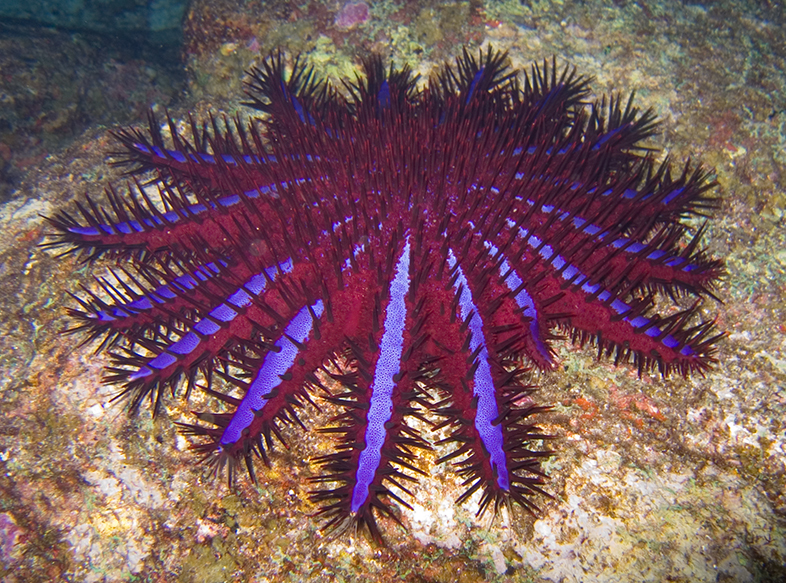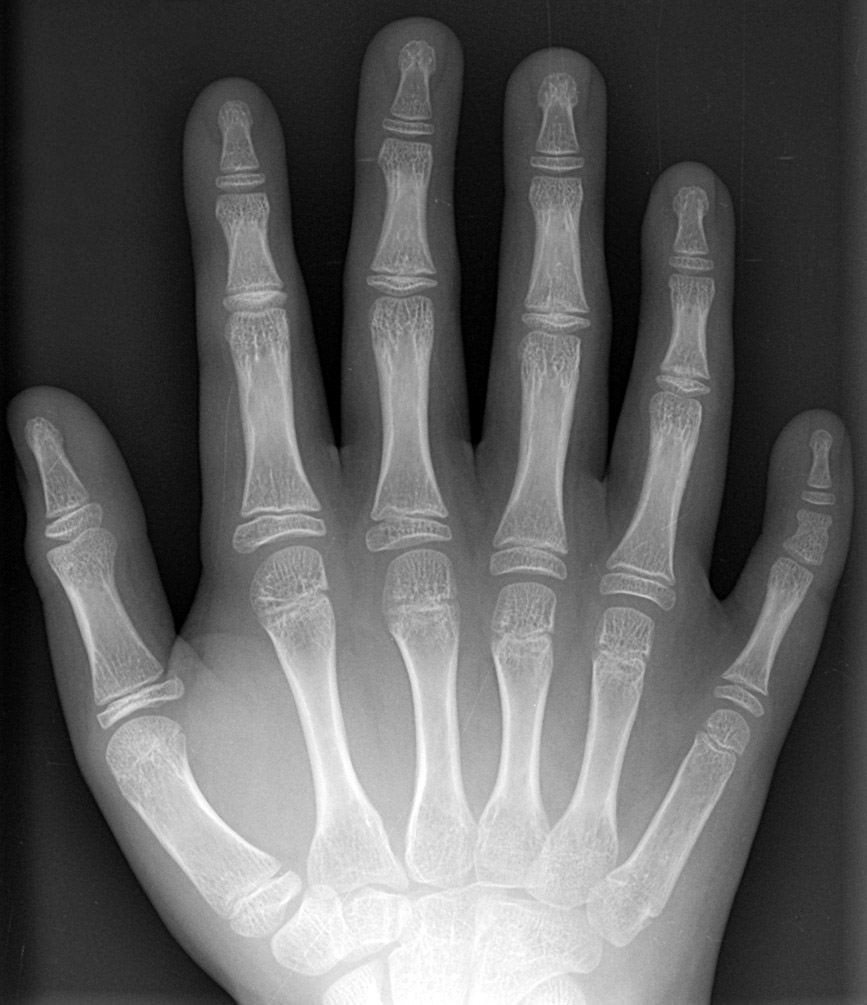In
every sea, in every ocean,
Beasts
of freakish locomotion
Prowl
the substrate, seeking prey
To
feast on in a monstrous way.
Dinner
is served. On a plate before you, a delicious roast chicken. The
bird, however, is larger than your head and you have no hands or
teeth you can break it up with, let alone a knife and fork to use.
How are you going to eat it? Are you going to push one half of your
stomach out through your mouth, smothering the chicken in digestive
juices to dissolve it, then haul your stomach back into place,
slurping up the nutritious broth as you go? No? Well you're
obviously not a starfish then.
 |
| Larval stages and anatomical structure of a starfish (by Ernst Haeckel, 1904) |
Members
of the class Asteroidea, to give them their proper name, are among
the most familiar of all sea creatures, the five-fingered favourites
of many a seaside publicity brochure. Yet even a cursory
investigation of their biology, ecology and evolutionary history
reveals the familiarity to be a deception. These icons of the
intertidal are about as strange as life on Earth gets.
If their
feeding habits weren't weird enough, asteroids have a skeleton made
of crystals, possess extraordinary powers of regeneration, and move
around on a system of tiny hydraulic tentacles. And they don't even
have a brain.
What
they do have is membership of an exclusive club: the Echinodermata,
or "hedgehog-skins". If you've ever seen footage of
crown-of-thorns sea stars chomping their way across the Great Barrier
Reef, you'll know how they get their name.
 |
| The crown-of-thorns starfish, Acanthaster planci |
Echinoderms aren't just
spiny, though. They also share a fondness for the number five: the
five living groups (starfish, sea urchins, sea lilies, brittle stars
and sea cucumbers) all have five-fold body symmetry. Sea lilies can
have scores of feathery arms, but always in multiples of five, and
though sea cucumbers and some sea urchins are at first glance
bilaterally symmetrical, the quintupled body segments are still there
if you know where to look.
This pentametry is unique in the animal
kingdom, though five hasn't always been the magic number. There were
no starfish, sea urchins or brittle stars in the Cambrian period, 500-odd million years ago. Their
relatives were plentiful, though, and whilst most looked pretty familiar,
there were some with only three-fold symmetry, and some without
symmetry at all. For reasons unclear, though, only the pentametrists
persisted.
A
third feature that links all echinoderms is the structure of their
skeleton. In sea urchins the elements, or ossicles ('little bones'),
have fused to form a rigid shell known as a test. In sea cucumbers
they are often reduced to microscopic specks in a gelatinous bag of
soft tissue.
 |
| Sea cucumber: not good in salad. |
All, however, are formed of the mineral calcite with a
uniquely porous structure, called stereom.
Optically, each ossicle functions like a single crystal, so some
brittle stars – echinoderms with rigid, disc-shaped bodies and
writhing, snake-like arms – can literally see through their skin,
whilst there are sea urchins that can peer through their spines.
The
image resolution of each ossicle may not be of the highest quality –
biologist Adam Summers likens it to ‘looking
through a peephole covered with tissue paper’ – but the compound
effect at least enables the echinoderm to
distinguish dangerous daylight from the cover of darkness. In
avoiding predation, every little bit helps, though it must make
echinoderm optometry a complicated business.
Not
as optical as a brittle star’s, nor as flexible as a sea
cucumber’s, an asteroid body consists of myriad tiny ossicles held
together by collagen and other soft tissues. The preservation
potential of the average dead starfish is therefore about that of the
cake left out in the MacArthur Park rain*, but they do get
fossilized. Indeed, thanks to the intermittent benevolence of the
fossil record, we know that asteroids have been shuffling about the
oceans for just shy of half a billion years.
 |
| Riedaster reicheli, from the Jurassic of Germany. |
For
the first 70-odd million of these, starfish were small and
five-rayed, rarely much larger than a strawberry, but around 425
million years ago, in the Silurian period of geological time,
something changed. One of the most catastrophic mass extinctions in
Earth history had occurred at the end of the preceding geological
period, the Ordovician, when an estimated 86% of marine species
disappeared.
It wasn’t the end of the world, though, and the
Silurian survivors had room to experiment. It seems starfish seized
the opportunity. Long-armed asteroids appeared, and really
short-rayed forms more biscuit than animal, but most bizarre of all
was the evolution of species that broke the five arm mould.
The
first of these deviants was discovered in 1850 by the Manx naturalist
Edward Forbes, in the Much Wenlock Limestone Formation of the Welsh
borderlands. With its wide body an explosion of bony shards and its
arms like corns-on-the-cob, Gray's scaly star (Lepidaster
grayi)
was defiantly at odds with its contemporaries.
 |
| Corn on the cob arms and an explosive body: Gray's scaly star (Lepidaster grayi) from the Silurian of England. |
It wasn't just the arms' appearance either, it was their number. Not a quintet, nor a sextet, or even a septet. No, Lepidaster had thirteen. As author-illustrator of the definitive British guide, Forbes knew his living starfish, but this fossil baffled him. At first it reminded him of the common sun star Crossasterpapposus, individuals of which often have 13 arms, but Forbes began to have his doubts. Was this palæontological oddball even a starfish at all? Could it be the missing link between starfish and sea lilies, their many-armed cousins?
Sadly,
Edward Forbes died before he'd resolved the mystery, and Gray's scaly
star drifted into obscurity. More then 60 years passed before anyone
examined it properly again. The scientist who finally took up the
challenge was William Kingdon Spencer.
A school inspector who
claimed to make the best omelettes in England, Spencer was fascinated
by fossil starfish, and, on the cusp of the Great War, began a
monograph that would take another half-century to be published
completely. He'd be dead by then, too, but only after he’d brought
primæval asteroids to life.
 |
| Not made by W. K. Spencer. |
Spencer was able to prove Lepidaster
was a starfish, his detective work turning up some exquisitely
preserved specimens unknown to Forbes. What he couldn't figure out
was why the fossils always seemed to be found upside-down. Had
Gray's scaly star flipped itself over and taken to living with its
mouth pointed towards the surface, its extra arms helping to gather
whatever morsels of food drifted its way? It was an unprecedented
concept, but then so was the starfish.
In
the end, Spencer’s hypothesis gained no followers. Palæontologists
are fairly parsimonious, and there was no compelling evidence that
Gray's scaly star hadn't functioned like living forms, with arms for
locomotion and its mouth against the substrate.
The broader puzzle
remained, though, of why a lineage of starfish ended up with not one
or two extra arms, but eight. Then a second triskaidekaphile turned
up, in slightly younger rocks from Australia, and the waters were
muddied further. Among Silurian starfish, 13 was clearly lucky for
some, but how had they evolved?
 |
| Supernumerary, but super? |
To
decode this enigma, we need to look at modern bodies. Bilaterally
symmetrical humans acquiring a third copy of everything would be
pretty freaky – An
extra eye in your forehead, sir? A third arm protruding from your
rib cage, madam?
– but multiradiate starfish are common at the present day. So if
the biological present is the key to the palæontological past,
living asteroids can help us unlock the mysteries of their ancient
ancestors.
Having
many extra arms might seem to undermine the hypothesis that five-fold
body symmetry is a defining characteristic of living echinoderms.
Indeed, in his book ClimbingMount Improbable,
Richard Dawkins argued just that. Marine biologist and
palæontologist Fred Hotchkiss, however, has demonstrated that even
multiradiate mutants begin life with five body segments, adding extra
rays later in development. As a result of his work, it is now
generally accepted that living echinoderms have five-part body
subdivision programmed into them at a basic level, even if it gets
obscured subsequently. So why do only some starfish go strange?
It
might be a corruption of their regenerative powers. Imagine you lost
your arm in an accident, and it grew back. You'd be pretty pleased.
But imagine how you'd feel if not only your arm reappeared, but your
severed arm grew a whole new you. Suddenly you'd be a twin.
I
wouldn't recommend trying it, but many starfish can do exactly this:
sacrificing a limb they'll grow back later, and in some species,
reproducing themselves from a cast-off. With tiny new rays budding
from a nucleus, and a streaming one-armed 'tail', such asteroids are
known colloquially as comets.
Regeneration is another echinoderm
eccentricity, taken to the greatest extreme by the sea cucumbers.
When faced with a potential predator, these garish mobile sausages
can self-eviscerate, spewing out all their internal organs before
wriggling off to grow them back in safety.
 |
| Regenerating rays in the sunflower star Pycnopodia helianthoides. |
It’s a long way from
certain, but multiradiate mutants might just be starfish that added
extra arms without having lost any in the first place. Switch a gene
on at a different point in development and five rays might become
six, seven, thirteen, or even fifty, the record set by the Antarctic
sun star Labidiasterannulatus.
The
next question that arises is: does having extra arms help? If the
ratio of body size to arm length is kept consistent, but eight extra
arms are added, the volume (or biomass) of a multiradiate starfish is
roughly double that of a 'normal' form. This means a marked increase
in the energy required to keep the animal functioning.
If you need
more food, there are two ways you can go about getting it. You can
out-muscle your competitors for existing food sources, or you can
start exploiting new ones. Many starfish with supernumerary rays
seem to have taken the latter course of action, from consuming coral,
to eating other echinoderms, even to scoffing fellow starfish.
Perhaps Gray’s scaly star was the pioneer. With its mouth in the
middle of a much larger and more flexible body than that of its
contemporaries, it would certainly have been capable of doing
something different.
My,
grandma starfish, what a lot of arms you have!
All
the better for grabbing you with!
Why
grandma starfish, what a flexible mouth you have!
All
the better for extruding my stomach and smothering you with!
 |
| Pisaster ochraceus tries to pull a mussel. |
It
won't come from the sky, but, if you are a coastal fisherman, the
threat of an asteroid impact is very real. Oyster- (and mussel-)
slurping starfish are a nightmare for most commercial shellfish
harvesters. The sucker-covered rays wrap round the shells of the
oyster and exert an opposing force to pull them apart.
Oysters can
pull their shells together incredibly tightly, but starfish suction
needs only to outlast the muscle power of its opponent. Once the
bivalve tires and its shells part ever-so-slightly, the asteroid has
won. Its stomach can squeeze through the sliver of an opening and
liquefy the shellfish inside.
It is said, perhaps apocryphally, that
fishermen used to solve this problem by dredging up the starfish,
chopping them in half with a knife, and then chucking the bodies back
into the sea. They didn't know, of course, that this was simply
helping their opponents double their numbers.
Oystermen in the
eastern US thus developed alternative strategies to keep their beds
asteroid-free: wagon-loads of starfish were carried off for use as
farm fertilizer, or the pests were mopped up from the seabed with
special cotton-tipped poles and boiled alive in on-board pots.
Asteroids may have many abilities, but they aren't invulnerable.
Don't
write asteroids off as a soft touch, though, certainly not if you're
a small sea creature. The surface of various starfish is covered by
unpronounceable weapons called pedicellariæ. These snapping pincers
are so independently minded that they were thought by many early
researchers to be separate organisms entirely, rather than part of
the asteroid.
| Pedicellariae of a sea urchin (from the Natural History Museum website) |
They resemble miniature tulips, but pedicellariæ are
certainly not flowery. The valves bite at anything that touches
them, deterring small organisms and parasites from setting up home or
hitching a ride, sometimes with a dash of poison as extra
discouragement. In one species – the velcro star Stylasteriasforreri
– this has evolved to the level of lazy but very sophisticated
predation.
Grabbing hold of fish that mistake the asteroid for a
rather spiky rock, the pedicellariæ skewer the stricken animal and,
like rock fans moving a crowd-surfer, pass it across the surface of
the starfish and round to the jaws.
Perhaps you might like to try
your own version of this next time you feel a bit peckish while
sunbathing on the beach? Part-conceal yourself face-down in the sand
and train the hairs on your back to catch unwary gulls and deliver
them to your mouth. It’ll save you a walk to the fried chicken
vendor on the promenade.
And
since we've come full circle, re-imagine before you the dinner I
began with. If you're thinking that a bird-eating starfish is a bit
preposterous, I offer you this. In the early 1980s, scientists in
British Columbia were studying the dietary preferences of the Pacific
sunflower star, Pycnopodia
helianthoides.
With 24 arms and a body up to a metre wide, this is a sea star
supernova. Not only is Pycnopodia
big, it's also fast and flexible, having almost nothing in the way of
a skeleton to slow it down. This enables it to scuttle over the
seabed at speeds of up to ten feet a minute, chasing down crabs,
hoovering up sand dollars and panicking molluscs into taking up
swimming. Some escape, but many don't; one sunflower star was found
with 110 individuals of the orb clam Diplodonta
in its stomach.
Impressive
as it was, however, this gluttony soon paled into comparison, for
another Pycnopodia
was caught in the act of consuming an alcid, a member of the bird
family that includes puffins and guillemots. The sunflower star
moves relatively fast, but how could it have captured a nimble diving
seabird?
Had the starfish lain in wait till one came within reach,
then reared up off the seabed, stretching its suckered arms auk-ward
and grappling it into submission? Sadly not. It was apparently just
scavenging a carcass it had come across. Nonetheless, if you do find
yourself on the Pacific coast, you might want to keep any small
animals you own away from the water. There's no predicting what
starfish might master next.
(An earlier version of this article was published in Deposits Magazine.)
*If
you’ve never listened to Richard Harris’s epic take on
psychedelic pop, I suggest you remedy that oversight soon.
Comments